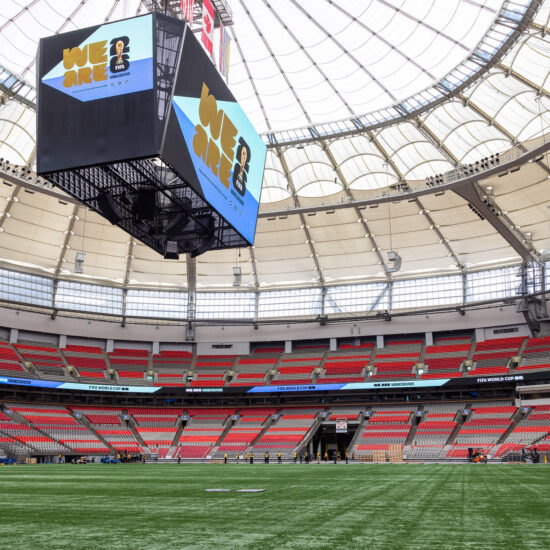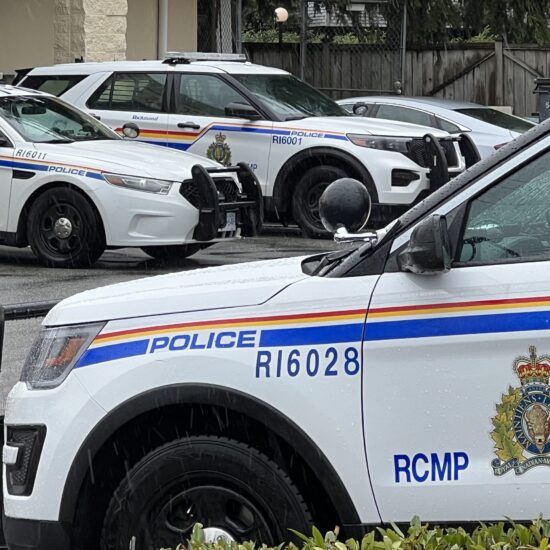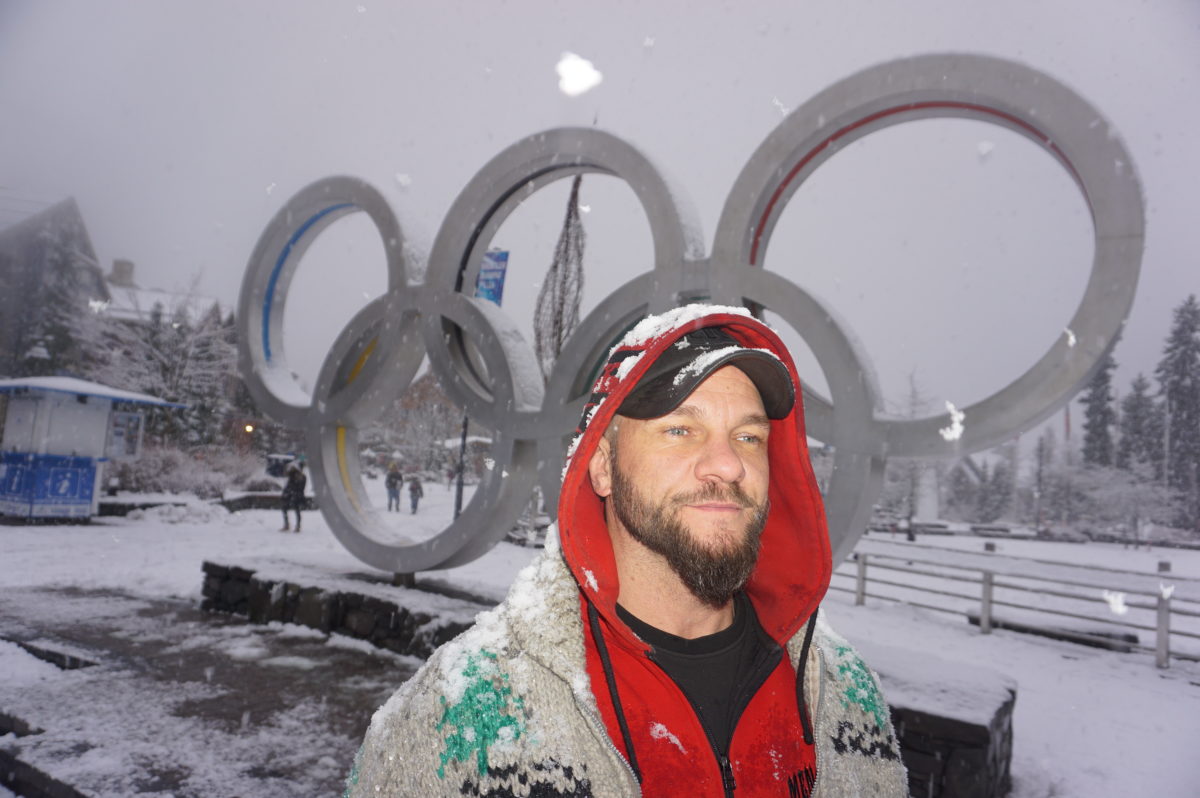
Terrance Kosikar was a medic who treated luger Nodar Kumaritashvili on the opening day of the Vancouver 2010 Winter Olympics at the Whistler Sliding Centre. The Georgian died later of his injuries, casting a pall over the Games. Kosikar suffered Post-Traumatic Stress Disorder, but now campaigns for awareness and solutions. On Feb. 10, he will begin a 24-hour, 24-kilometre quest to flip a 200-kilogram tire in Stanley Park to aid Camp My Way, the wilderness program he founded to help first responders overcome PTSD. He will also flip the tire up Blackcomb Mountain beginning Feb. 13. theBreaker spoke with Kosikar about his struggles. This is the first of two parts. Read part 2, click here.
Bob Mackin
While the Olympic flame was jogged through the streets of downtown Vancouver on February 12, 2010, ski jumpers in the Callaghan Valley were the first to compete in the 21st Olympic Winter Games.
Just beyond Whistler Village, on the slopes of Blackcomb Mountain, lugers maneuvered the tricky, extreme conditions of the Whistler Sliding Centre to train for the next evening’s heats.
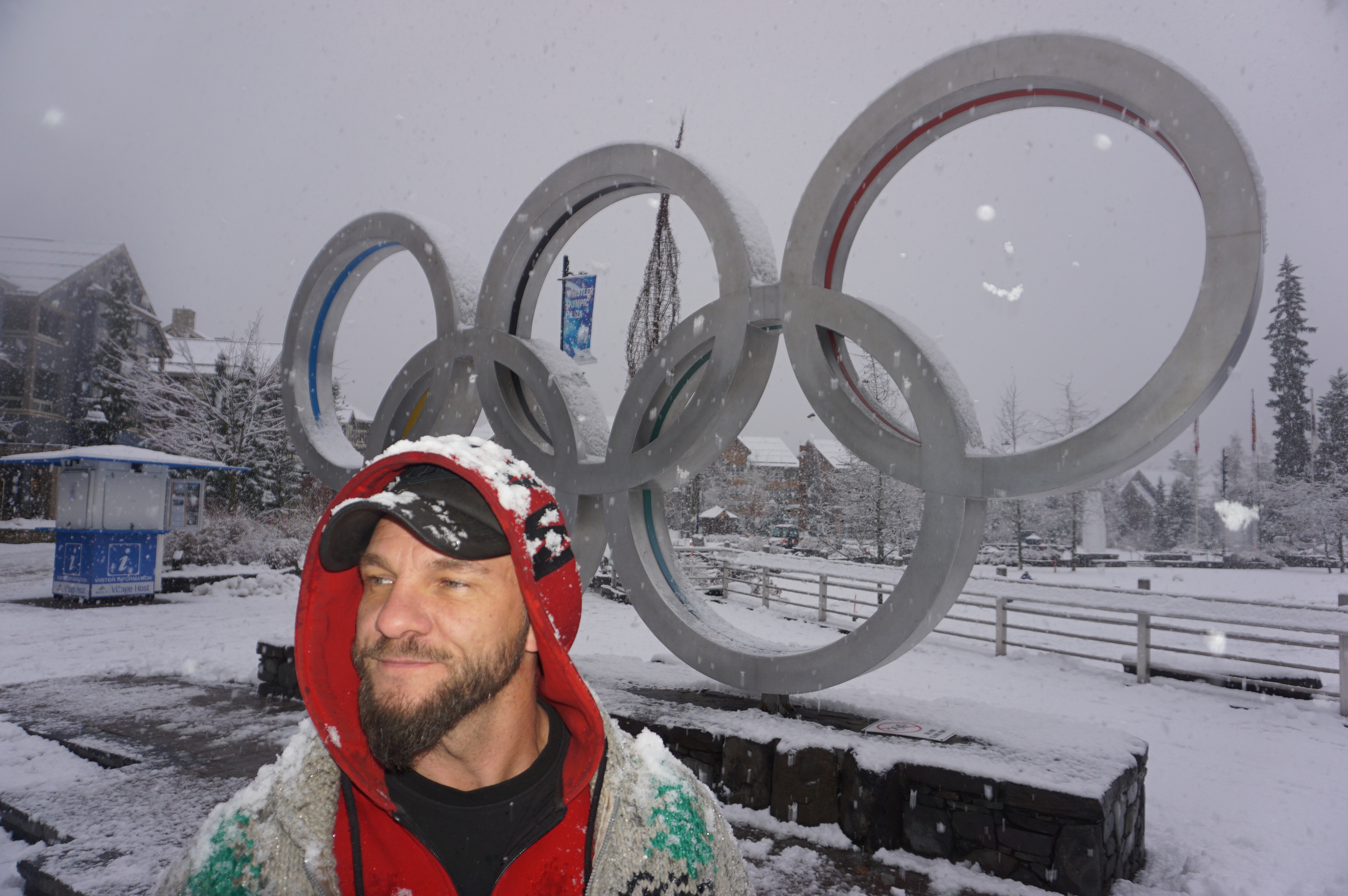
Terrance Kosikar in Whistler Olympic Plaza (Mackin)
At 10:48 a.m., it was Nodar Kumaritashvili’s turn. “Luge in track,” were the words that came across medic Terrance Kosikar’s walkie-talkie.
The 21-year-old dreamed of finishing in the top five, if not on the podium. He was looking forward to a hero’s welcome in his hometown, Bakuriani, Georgia. The night before his last run, an anxious Kumaritashvili phoned his father David, an ex-Soviet Union youth luge champion, for advice. The track was marketed as the world’s fastest, and many athletes had reservations. Kumaritashvili had crashed twice during the 20 runs he took in November 2009, but was not seriously hurt. There were 75 other crashes during that session, with concussions among the most common injuries.
All seemed normal as Kumaritashvili, in the number 30 bib, made it through corner 12 and the treacherous stretch dubbed 50-50. Then something went horribly wrong in corner 16. He hit the roof and careened into the short wall. That was when Kosikar — in a standard-issue blue VANOC jacket, red first aid vest and not-so-standard dyed red mohawk — jumped into action.
“Immediately, I started running towards the exit of 16, at that point is when I witnessed this warrior exit the track and collide with a solid steel post,” recalled Kosikar, in an exclusive interview with theBreaker.
The 44-year-old said the sound of Kumaritashvili’s helmet striking the post was the worst thing he had ever heard.
He remembers shouting, into his walkie-talkie “10-80, 10-80 [the track’s code for injured athlete], code 3, corner 16!”
Kumaritashvili had landed under the track, in a six-foot trench, with his eyes wide open, but he was not breathing. Kosikar slipped a mask on his face and performed cardiopulmonary resuscitation until ambulance paramedics arrived. The athlete was loaded into the vehicle, and Kosikar was part of a team that desperately tried to keep him alive. The blunt force trauma to his head was too much to overcome, and he was pronounced dead at the athletes’ village polyclinic within an hour.
“There was nothing more that we could do to help bring this kid back,” he sighed.
Kosikar said he washed his hands and changed his bloodied clothes before being summoned with other polyclinic staff to a meeting. A suited man from VANOC, that he had never seen before or since, issued a blunt order: “We don’t talk about this to nobody. no media, no friends, no co-workers, no family. Nothing.”
Kosikar rode back to the Whistler Sliding Centre in an unmarked police car, to a staff meeting in the VIP tent. Venue general manager Craig Lehto thanked everyone for doing their best amid the tragedy and urged them to work together. The Olympics were just beginning. The show must go on.
Kosikar: “I didn’t know who I was anymore. I was afraid to look at people.”
Kosikar, who had spent his teens and twenties in and out of gangs and jails, took the dual messages of silence and perseverance seriously. He wasn’t prepared for what would happen.
“I wasn’t sleeping at night, I had to show up for work the next day, I had to respond to crash after crash,” he recounted. “As I’m responding to each fo the crashes, my nerves were uncontrollable, the sights and sounds that I heard of athletes’ families on scene screaming, the sirens, the overwhelming amount of guilt that set in for me became actually completely unbearable, because I took responsibility, because I knew this was easily something that could’ve been prevented. I felt that because I kept my mouth shut, I felt that this was my fault. This was the feeling that I didn’t have control of.
“I couldn’t bear with the thoughts and uncontrollable amount of everything all at once, not understanding why.”
A few days later, he said, a VANOC doctor gave him her business card. She suggested briefly, as they walked in opposite directions at the track, that he call her if he wanted to talk. Kosikar said that was the only time during the Games that anyone offered him help. He had a job to do, the world was watching and was already warned not to talk to anyone. So he didn’t make the call.
When Kaillie Humphries and Heather Moyse won a surprise bobsleigh duo gold medal for the host country on Feb. 24, Kosikar grabbed a Canadian flag and ran across the track in celebration. Kosikar said that an hour later, he left the venue to acquire more than an ounce of cocaine. He wanted to overdose and die.
A week later, after the Games had ended, his family doctor diagnosed him with Post-Traumatic Stress Disorder and prescribed various anti-psychotic, sleeping and pain pills. The doctor referred Kosikar to a psychologist, but he didn’t go. The drugs and the VANOC warning were enough to keep it all to himself.
It was the early stages of a nearly five-year journey to hell and back that would include four stops at detox centres, four stops in mental health facilities, and two in treatment centres.
He ultimately landed in the Downtown Eastside, where he was slowly killing himself. “I was in such a psychosis and such a …,” he paused. “I didn’t know who I was anymore. I was afraid to look at people.”
Kosikar admitted that he did a lot of things wrong in his life, by hurting others and hurting himself. Growing up in Coquitlam, he faced bullying from schoolmates because of his father, who was jailed in Kingston Penitentiary and Penetanguishene Mental Health Centre for criminal harassment. So he fought back.
“I wanted to be feared, instead of being in fear,” he said. “I wanted to be a badass guy, where people moved away as opposed to coming and taking what I had.”
Kosikar discovered cocaine, broke into houses and nearly beat a man to death, for which he was sentenced to a young offenders’ boot camp. Upon his release, he felt angry with his girlfriend cheating on him and his mother and step-father for moving to Ontario. So he drove with a friend to Los Angeles, fell into the drugs and guns gang lifestyle, and was brutally beaten by a rival.
Upon returning to Canada, Kosikar needed money to feed his drug habit. Instead of high school, he made hundreds of dollars a night as a male stripper in clubs in Southern Ontario, under the stage name “Jimmy Dean.” More money was to be had in X-rated videos and on stages at nightclubs in New York, Boston and Miami. And more money, meant more cocaine. He emerged from that lifestyle ever so briefly, got married in Georgia, and got a job as a Delta Airlines ground worker. But he lost that job and slipped back into his old ways.
After a routine 1998 traffic stop for an expired driver’s licence in Cobb County, Ga., police found cocaine in his possession. His plea bargain included deportation to Canada, but not before a harrowing stay in a federal prison while he awaited his transfer. That is where he said he hit rock bottom.
Kosikar drew a picture of a bird on razor wire, and toothpasted it to the wall and dreamed of moving to the wilderness. It was the only way to preserve his sanity amid the bland meals, the round-the-clock lights and the sounds of other inmates screaming.
“If you cave to the insanity you just become a product of your environment. You have to focus on something,” he said. “I focused on the fantasy of being a respected man in the community, have a family, have a home up in the mountains, I fantasized about the trees and the birds.
“The only thing I could think of was saving someone’s life, [I was] tired of seeing people’s lives taken, I’m tired of the last 15 years, I’m tired of the visions of death, I want to help.”
Whistler beckons
Kosikar said he eventually moved to Whistler in 2001 and paid the bills by running a porn video website from a rented mansion, claiming $300,000-a-year income. But a new girlfriend and her five-year-old son changed his outlook on life.
“I felt genuine love for the first time in my life,” he said. “There’s somebody who doesn’t want money, doesn’t want sex, doesn’t want to use me. A kid who knows nothing other than he can respect me for me.”
The boy motivated Kosikar to become a fireman. He didn’t make the cut the first year he applied, and was told he needed on-the-job experience. So he volunteered as a ski patroller on Blackcomb and studied WorkSafeBC manuals. The satisfaction of helping rescue injured skiers and snowboarders “was better than all the 15 years of drugs I’d ever taken, all at once. I felt I had a purpose, I felt I made a difference and I saved someone’s life.”
He became an on-call fireman in Whistler in 2005 and joined the Whistler Sliding Centre two years later. The $119 million venue, which was pegged at $55 million in the bid book, was christened before Christmas 2007 by bobsled pilot Pierre Lueders and brakeman Justin Kripps. Their run caused a collective gasp when the duo caught air and nearly crashed.
Crashes mounted and flaws in the track became evident, as athletes were treated for broken bones and concussions. After the first sliding season ended and the ice melted, workers arrived with jack hammers to make it safer, he said. But they could only do so much for fear of disrupting the track refrigeration system’s ammonia pipes.
Kosikar recalls that, in the summer of 2009, workers installed solid steel posts and a roof over parts of the track. Kosikar was told it was for dual purpose: to keep the ice consistent and for the “look of the Games” venue decorations. Kosikar said he approached venue general manager, Craig Lehto, and pleaded with him to rethink the installation of posts so close to where they could be struck by an out of control sled or, even worse, an sledder.
Kosikar said Lehto thanked him and kept walking. Middle managers warned him to say nothing more about the posts if he wanted to keep his job.
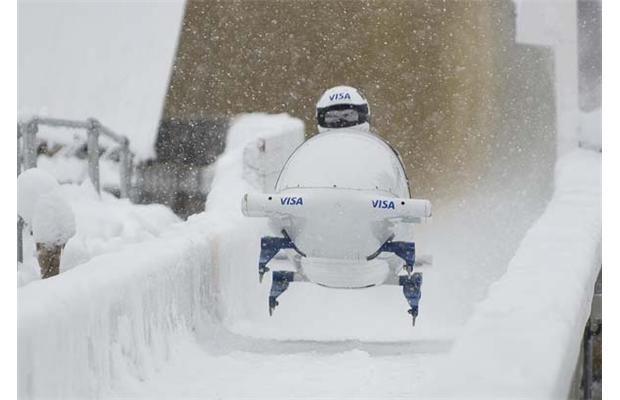
Lueders and Kripps on the Whistler Sliding Centre for the first time in 2007 (VANOC)
“I need my job and I’ve paid my dues to be here, the last thing I wanted to do was lose my job, so I kept my mouth shut and watched them put up these stupid posts,” he said.
Coroner Tom Pawlowksi’s October 2010 investigation report deemed the cause of death multiple blunt force injuries due to collision with fixed structures. Pawlowski couldn’t conclusively rule out the influence of the shades, but, on a balance of probabilities, found they were not critical. As for the poles: “The padding that was introduced to some of the outside posts after the incident would not have prevented this particular death given the force of the collision, and would have been superfluous had Mr. Kumaritashvili been kept inside the track.”
The Coroners Service of B.C.’s mandate is to find facts, not fault. It chose not to order an inquest hearing into Kumaritashvili’s death.
Lehto, who is now general manager of the Vancouver Convention Centre, was contacted by theBreaker, but refused to comment.
Is PyeongChang prepared?
It can take only one out-of-the-ordinary incident to trigger PTSD, said Dr. Mark Miller, a clinical research psychologist with the U.S. Department of Veterans Affairs’ National Center for PTSD in Boston.
“They might’ve seen it all, but then something really unusual occurs, something that breaks them out of their current medical mindset about it, can make that particular event traumatic,” Miller said in an interview.
Miller said PTSD researchers are struggling to understand the “interplay of risk factors” such as previous experience, inheritable factors, and developmental factors. It can make a big difference if the right support systems are in place to help the PTSD sufferer overcome. The impacts of a propensity towards substance abuse, as in Kosikar’s case, and actually witnessing the triggering incident cannot be discounted.
“Usually [first responders] arrive some time after the accident and are able to sort of turn on their training and approach the patient and it’s a case to work on, applying your medical training and you’re going through the routine of providing first aid,” Miller said. “In this case, he witnessed probably a fairly horrific accident and then had to provide the first aid, as the first responder. You imagine he might be… more disturbed by the experience than he would’ve been had he been called in and showed up 30 seconds later, or a minute later.”
Anyone feeling distress can call 9-1-1, the 24-hour crisis line (1-800-SUICIDE in Canada; 1-800-273-TALK in the United States) or visit a hospital emergency room. People are ready to help.
Dr. Jack Taunton, who was the chief medical officer for Vancouver 2010, was a pallbearer at the Vancouver memorial service for Kumaritashvili, on the Monday after the fatal crash. The luger’s coach and uncle, Felix Kumaritashvili, was among the mourners.
Taunton said his department did all it could to prepare for a trauma at the track. In July 2009, during the Canadian Academy of Sports Medicine conference, a mock bobsled crash with disaster scenario actors took place at the Justice Institute in New Westminster. The scenario included a mental health component, he said.
During the Games, Taunton said there were more than two dozen psychologists available to counsel affected first responders at the sliding centre. He said they did 80 treatments for first responders, athletes and officials.
Kosikar said he was never made aware of that exercise and the post-tragedy counselling was not advertised. There was only that brief encounter with a doctor who flipped him her business card.
Taunton said he was surprised to hear that Kosikar was not treated.
“We’ve got to make sure that everybody, including the first responders, know that we’re there for them, they have to take advantage of that,” Taunton said. “We all have to, on both sides of the equation, have to be well-prepared, we have to do a better job in terms of doing a real head count — ‘Are you ok? Are you ok?’ Everybody went through that at the time, but you have to realize, that’s dependent upon that individual stepping forward and saying ‘I could take that, I could use that,’ or ‘I would like to explore that’.”
theBreaker asked the International Olympic Committee about mental health treatment plans and procedures, should any athlete or worker at PyeongChang 2018 need help. The IOC press office said that responsibility falls under the South Korean organizing committee’s medical services program. POCOG spokesperson Jihye Lee did not respond.
-
In part 2, Kosikar tells theBreaker about hitting rock bottom and reaching out to executives from the Vancouver 2010 Olympics organization. Read part 2. Click here.
Support theBreaker.news for as low as $2 a month on Patreon. Find out how. Click here.








